Arctic cyanea — a delightful giant of the world of jellyfish
Jellyfish are not very pleasant creatures, so it is quite difficult to admit that they can be admired. But the Arctic cyanea, the largest and most beautiful jellyfish in the world, completely breaks stereotypes. This inhabitant of cold seas and oceans invariably inspires admiration from everyone who sees her, even if such a meeting is far from the first.
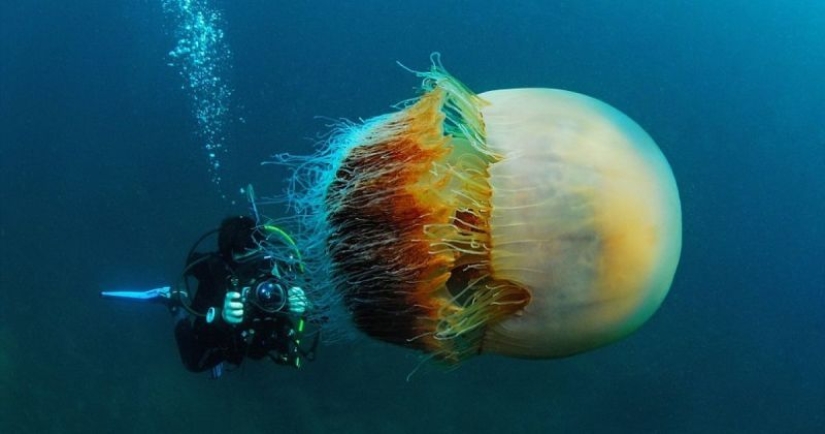
Cyanea arctica, or as it is also called Cyanea hairy and lion's mane (Latin Cyanea capillata, Cyanea arctica) is the longest animal of all currently living on earth. It is even larger than a blue whale, since a marine mammal rarely exceeds 30 meters in length, and even 35 meters is not the limit for cyanea. The largest specimen of this jellyfish, which scientists were able to measure, reached a length of 37 meters with a dome diameter of more than 2 meters!
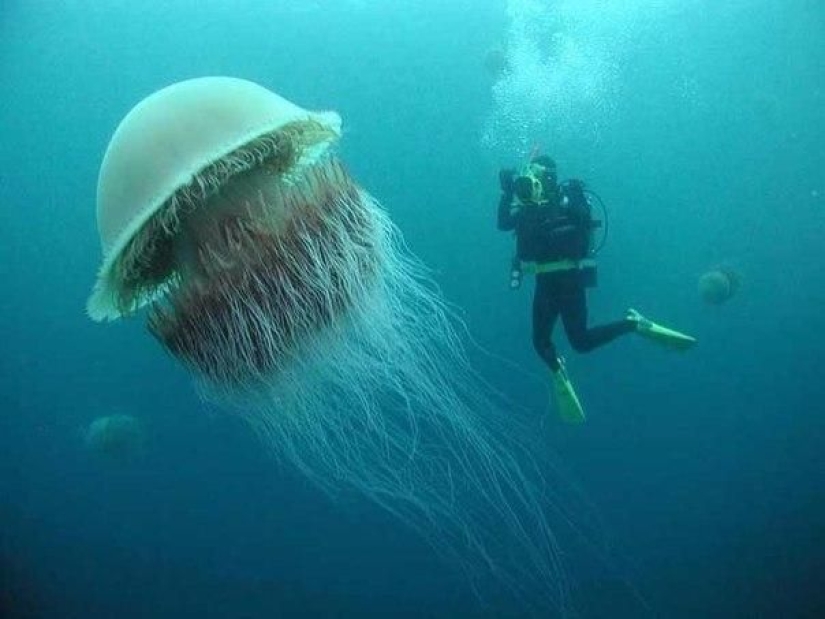
This beauty belongs to the scyphoid jellyfish of the discomedusa order, which has not yet been studied too well by science. Everyone knows that there are several types of cyanea, but no specialist will say exactly how many of them and how they differ. It is known for sure that in addition to the giant lion's mane, there are more modest-sized blue cyanea (Suapea lamarckii) and Japanese cyanea (Suapea capillata nozakii), but this is not all.
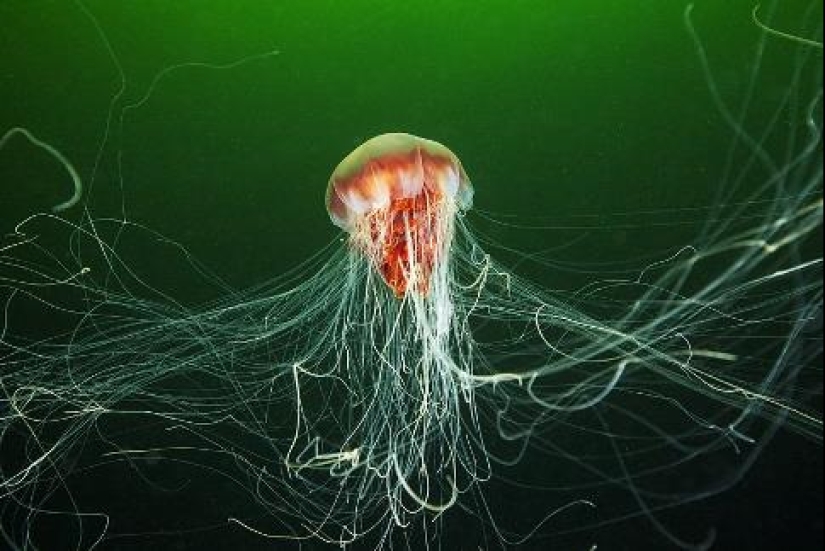
Arctic cyanea is an inhabitant of cold and moderately cold waters. It can also be found in warm seas, for example, off the coast of Australia, but this is rare, since the giant jellyfish feels better where it is cold. It is difficult to survive in the tropics of cyanea, and if the jellyfish reaches puberty, then its size is several times smaller than that of relatives from northern waters.
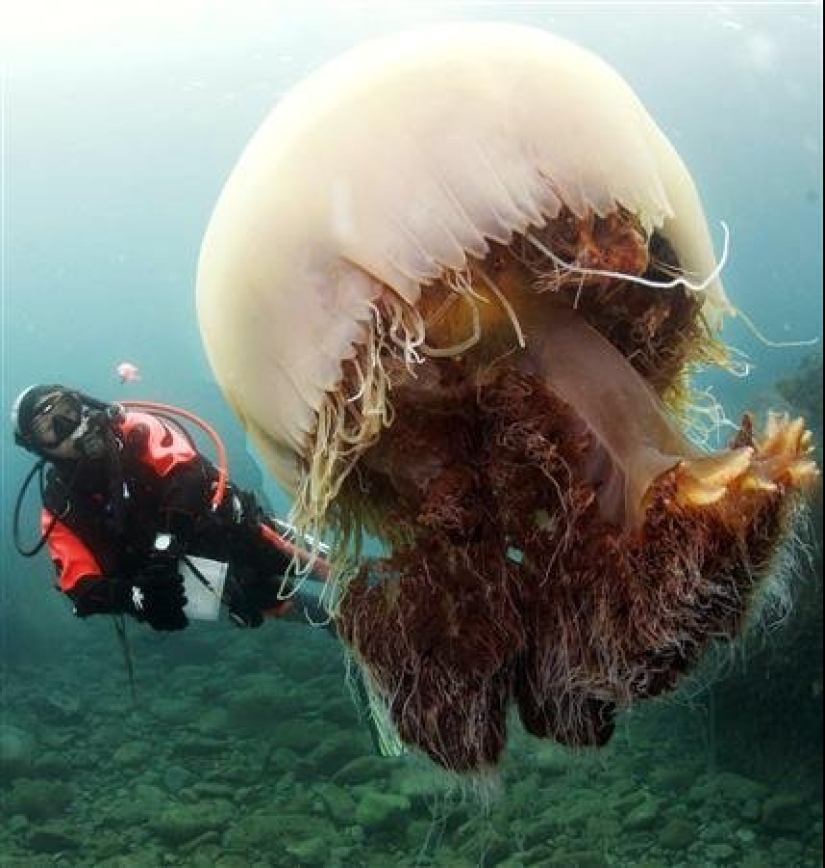
The largest specimen with a length of 37 meters was found in 1865 on the shore of Massachusetts Bay, on the Atlantic coast of the USA. The dome of this jellyfish was 2.29 meters in diameter and science still does not know of documented finds of individuals of this size.
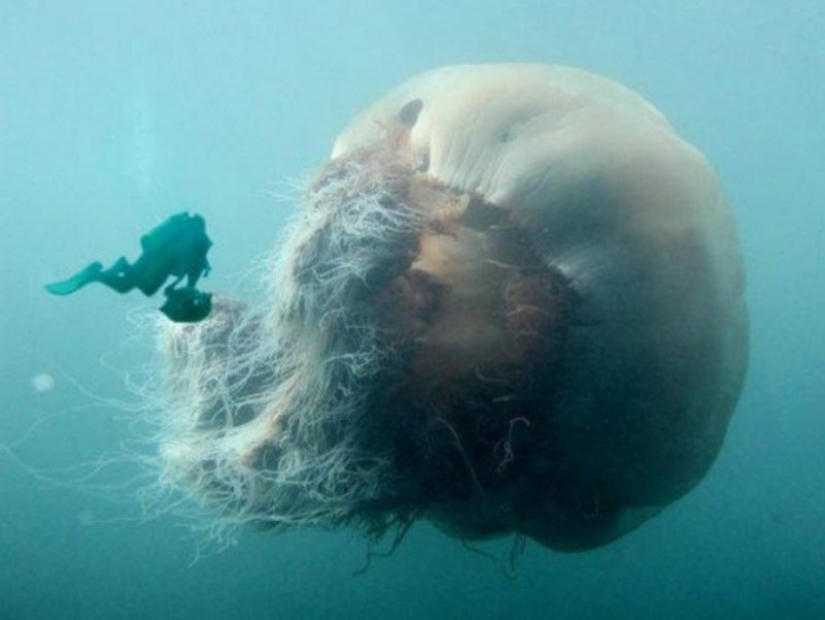
The body of the Arctic cyanea can have a very different color, from bright blue to dark red, but the same shades of brown and brown prevail. In large adult specimens, the top of the dome gives off yellowness, and its edges are red. The mouth blades are most often crimson, and the long tentacles are pink, blue or purple. For young jellyfish, brighter colors are characteristic, but with age they seem to fade and become faded.
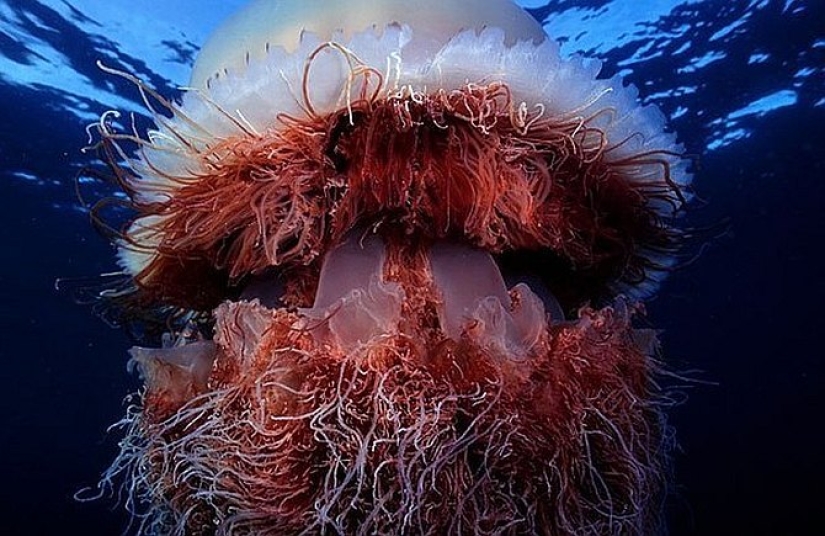
The Arctic cyanea has many long tentacles, collected in eight groups. Each of them has from 65 to 150 tentacles, which are lined up in rows. The dome of the jellyfish is also divided into eight sectors, which is why it resembles an eight-pointed star.
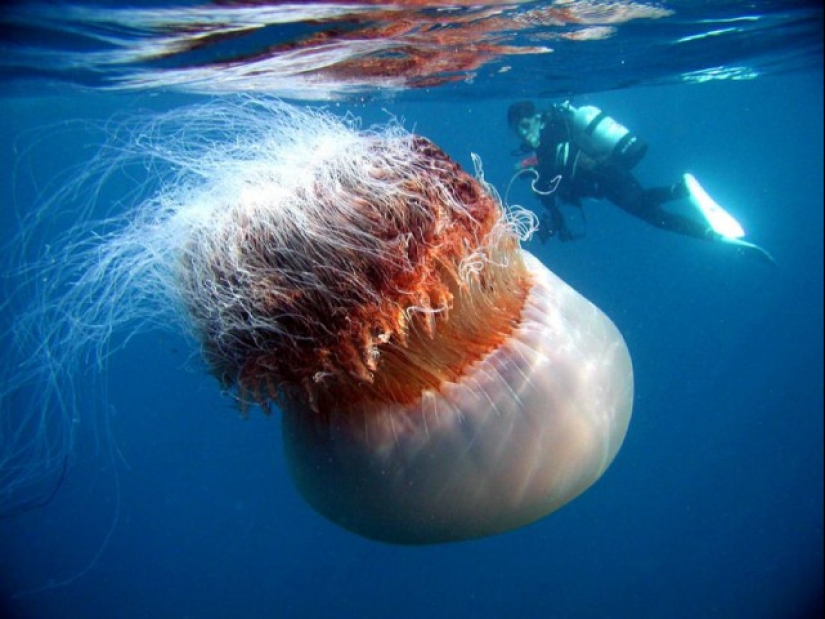
These jellyfish can be both female and male. Fertilization in them does not occur quite normally — an adult male throws out sperm through the mouth opening, which swim themselves to the brood chambers of females located on the oral blades. Fertilization takes place here and the first stage of larval life takes place.

When the time comes, the formed cyanea larvae leave the chambers and begin to swim independently in the water column. This happens for several days until the larva chooses a suitable place for itself to gain a foothold on the ground or on the surface of some underwater object.
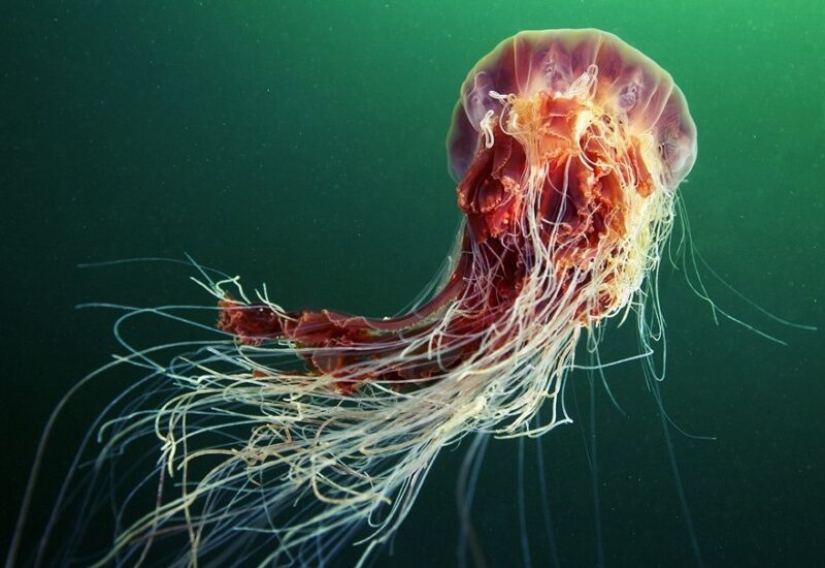
Securely attached to the base, the larva transforms into a polyp — scyphystoma. At this intermediate stage of life, the future jellyfish actively feeds, grows and even reproduces by budding. In the spring, the scyphistome begins transverse division (strobillation) and another form of larvae, ethers, is born.
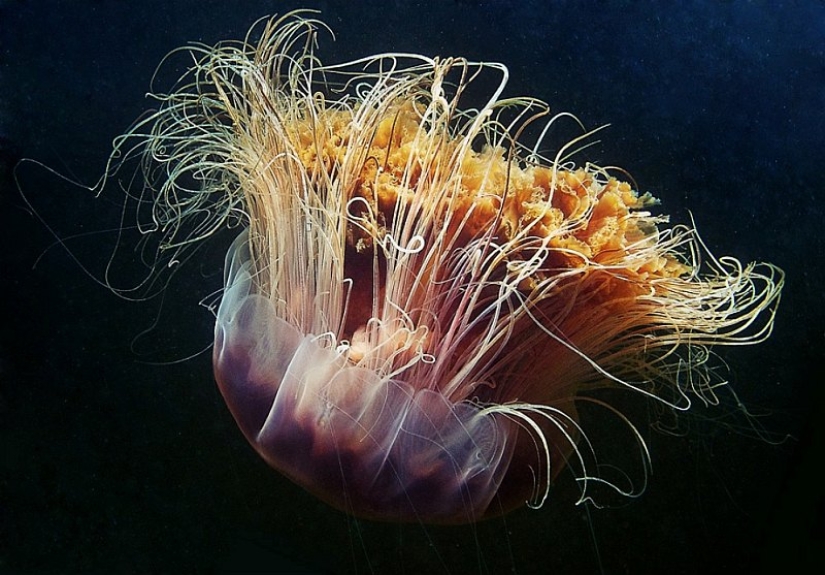
These babies are already more like adult jellyfish, as they have a miniature dome with eight rays. The ethers do not have tentacles and mouth blades yet, but after just 2-3 months they begin to transform into small, but already real Arctic cyanoids.
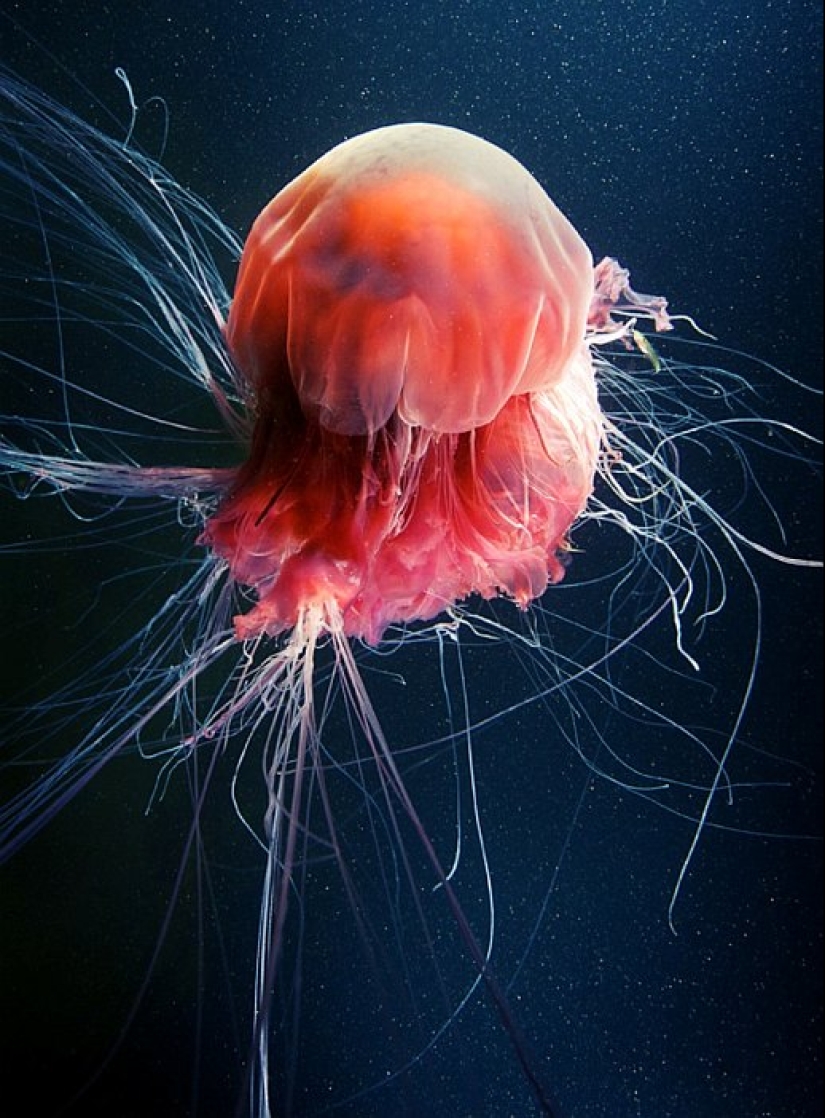
Almost the entire life of cyanides takes place in the surface layers of water. Jellyfish move slowly, using the movements of tentacles and currents, trying to stay away from dangerous shores for them. During its wanderings, the jellyfish spreads its tentacles, which are covered with strekal cells, similar to small harpoons. When a victim approaches, cyanea shoots cells with a poison that has a nerve-paralytic effect.
The main prey of cyanoids is plankton and small fish. Cyanea venom can create problems for a person, but it cannot kill him. There is only one known case of death of a swimmer after contact with the tentacles of a jellyfish and usually everything is limited to a skin burn, which passes over time by itself and does not need treatment.
Recent articles

There are dolls very similar to living people. And there are so realistic that their appearance can only be explained by magic. ...

Japan is deservedly considered one of the safest countries in the world. Even organized crime there has a "human face" ...

Famous British photographer Bob Carlos Clarke was born in an Irish corps in 1950. In 1969 he moved to England to study art and ...